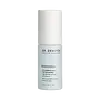What's inside
What's inside
 Key Ingredients
Key Ingredients

 Benefits
Benefits

 Concerns
Concerns

No concerns
 Ingredients Side-by-side
Ingredients Side-by-side

Water
Skin ConditioningAscorbic Acid
AntioxidantGlycerin
HumectantHydroxyethylcellulose
Emulsion StabilisingSodium Hyaluronate Crosspolymer
HumectantSodium Hyaluronate
HumectantSodium Acetylated Hyaluronate
HumectantHydrolyzed Sodium Hyaluronate
Skin ConditioningSodium PCA
HumectantErythritol
HumectantChondrus Crispus
MaskingXanthan Gum
EmulsifyingFerulic Acid
AntimicrobialSalix Alba Bark Extract
AstringentCamellia Sinensis Leaf Extract
AntimicrobialAlpha-Glucan Oligosaccharide
CleansingPhenethyl Alcohol
Masking1,2-Hexanediol
Skin ConditioningGlycyrrhiza Glabra Root Extract
BleachingParfum
MaskingLimonene
PerfumingLinalool
PerfumingBenzyl Salicylate
PerfumingWater, Ascorbic Acid, Glycerin, Hydroxyethylcellulose, Sodium Hyaluronate Crosspolymer, Sodium Hyaluronate, Sodium Acetylated Hyaluronate, Hydrolyzed Sodium Hyaluronate, Sodium PCA, Erythritol, Chondrus Crispus, Xanthan Gum, Ferulic Acid, Salix Alba Bark Extract, Camellia Sinensis Leaf Extract, Alpha-Glucan Oligosaccharide, Phenethyl Alcohol, 1,2-Hexanediol, Glycyrrhiza Glabra Root Extract, Parfum, Limonene, Linalool, Benzyl Salicylate
Water
Skin ConditioningGlycerin
HumectantSodium PCA
HumectantSodium Hyaluronate
HumectantHydrolyzed Sodium Hyaluronate
Skin ConditioningResveratrol
AntioxidantBakuchiol
AntimicrobialCamellia Sinensis Extract
AntioxidantGenistein
Skin ConditioningPunica Granatum Sterols
Skin ConditioningCucumis Sativus Fruit Extract
EmollientAloe Barbadensis Leaf Juice
Skin ConditioningPalmitoyl Tripeptide-28
Skin ConditioningErgothioneine
AntioxidantGlutathione
Zinc PCA
HumectantCopper PCA
HumectantTocopheryl Acetate
AntioxidantPhenoxyethanol
PreservativeDisodium EDTA
Water, Glycerin, Sodium PCA, Sodium Hyaluronate, Hydrolyzed Sodium Hyaluronate, Resveratrol, Bakuchiol, Camellia Sinensis Extract, Genistein, Punica Granatum Sterols, Cucumis Sativus Fruit Extract, Aloe Barbadensis Leaf Juice, Palmitoyl Tripeptide-28, Ergothioneine, Glutathione, Zinc PCA, Copper PCA, Tocopheryl Acetate, Phenoxyethanol, Disodium EDTA
Ingredients Explained
These ingredients are found in both products.
Ingredients higher up in an ingredient list are typically present in a larger amount.
Glycerin is already naturally found in your skin. It helps moisturize and protect your skin.
A study from 2016 found glycerin to be more effective as a humectant than AHAs and hyaluronic acid.
As a humectant, it helps the skin stay hydrated by pulling moisture to your skin. The low molecular weight of glycerin allows it to pull moisture into the deeper layers of your skin.
Hydrated skin improves your skin barrier; Your skin barrier helps protect against irritants and bacteria.
Glycerin has also been found to have antimicrobial and antiviral properties. Due to these properties, glycerin is often used in wound and burn treatments.
In cosmetics, glycerin is usually derived from plants such as soybean or palm. However, it can also be sourced from animals, such as tallow or animal fat.
This ingredient is organic, colorless, odorless, and non-toxic.
Glycerin is the name for this ingredient in American English. British English uses Glycerol/Glycerine.
Learn more about GlycerinThis ingredient is created by putting sodium hyaluronate through hydrolysis.
You might know this as 'mini' or 'ultra low-molecular weight' hyaluronic acid. The small molecule size means it is able to travel deeper in the skin.
According to studies, low molecular-weight hyaluronic acid can:
One study from 2011 found ultra-low weight HA to show pro-inflammatory properties. Another study from 2022 found it to downregulate UV-B induced inflammation.
Hydrolysis is a process of changing a molecule using water or enzymes.
This ingredient is water-soluble.
Learn more about Hydrolyzed Sodium HyaluronateSodium Hyaluronate is hyaluronic acid's salt form. It is commonly derived from the sodium salt of hyaluronic acid.
Like hyaluronic acid, it is great at holding water and acts as a humectant. This makes it a great skin hydrating ingredient.
Sodium Hyaluronate is naturally occurring in our bodies and is mostly found in eye fluid and joints.
These are some other common types of Hyaluronic Acid:
Learn more about Sodium HyaluronateSodium PCA is the sodium salt of pyroglutamic acid. It is naturally occurring in our skin's natural moisturizing factors where it works to maintain hydration.
The PCA stands for pyrrolidone carboxylic acid, a natural amino acid derivative.
This ingredient has skin conditioning, anti-inflammatory, and humectant properties. Humectants help hydrate your skin by drawing moisture from the air. This helps keep your skin moisturized.
Learn more about Sodium PCAWater. It's the most common cosmetic ingredient of all. You'll usually see it at the top of ingredient lists, meaning that it makes up the largest part of the product.
So why is it so popular? Water most often acts as a solvent - this means that it helps dissolve other ingredients into the formulation.
You'll also recognize water as that liquid we all need to stay alive. If you see this, drink a glass of water. Stay hydrated!
Learn more about Water